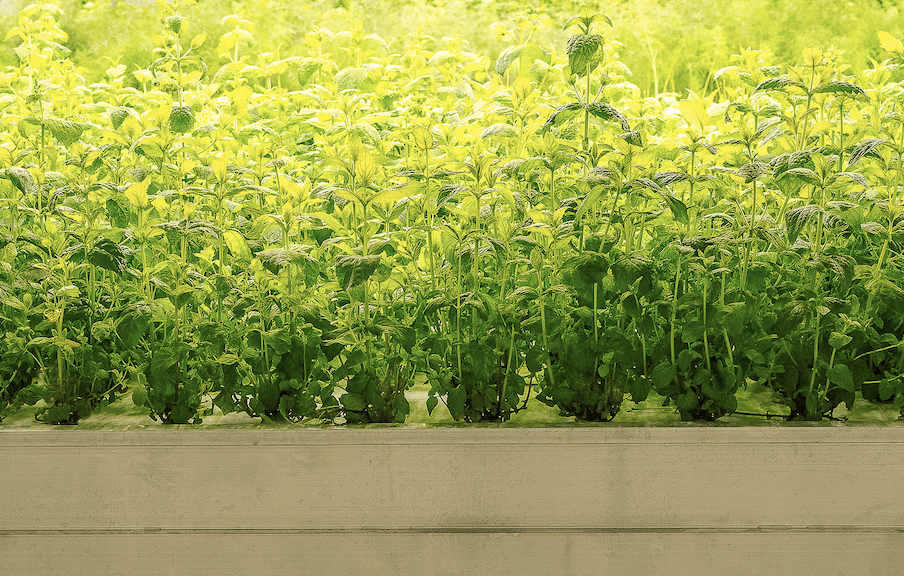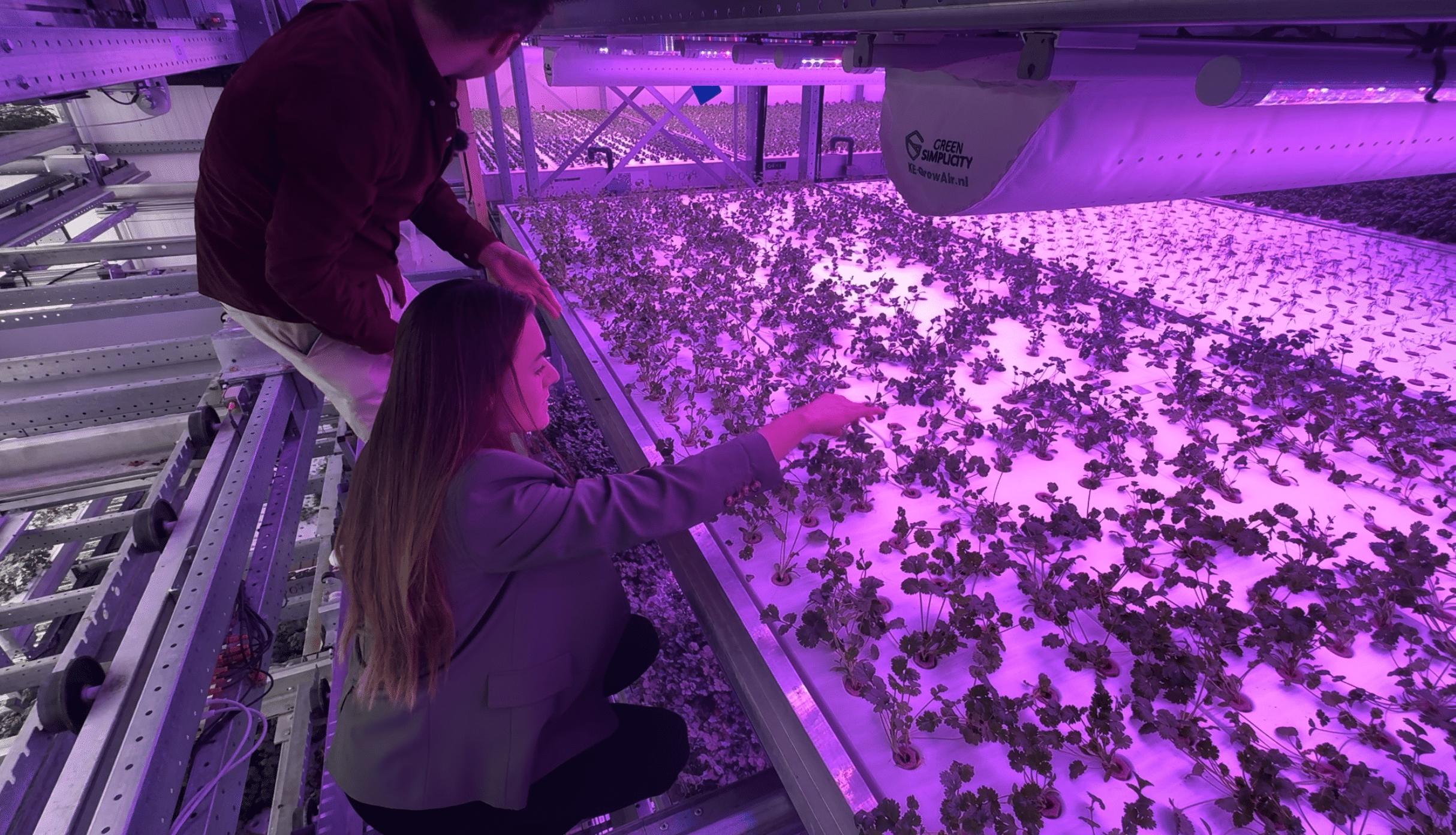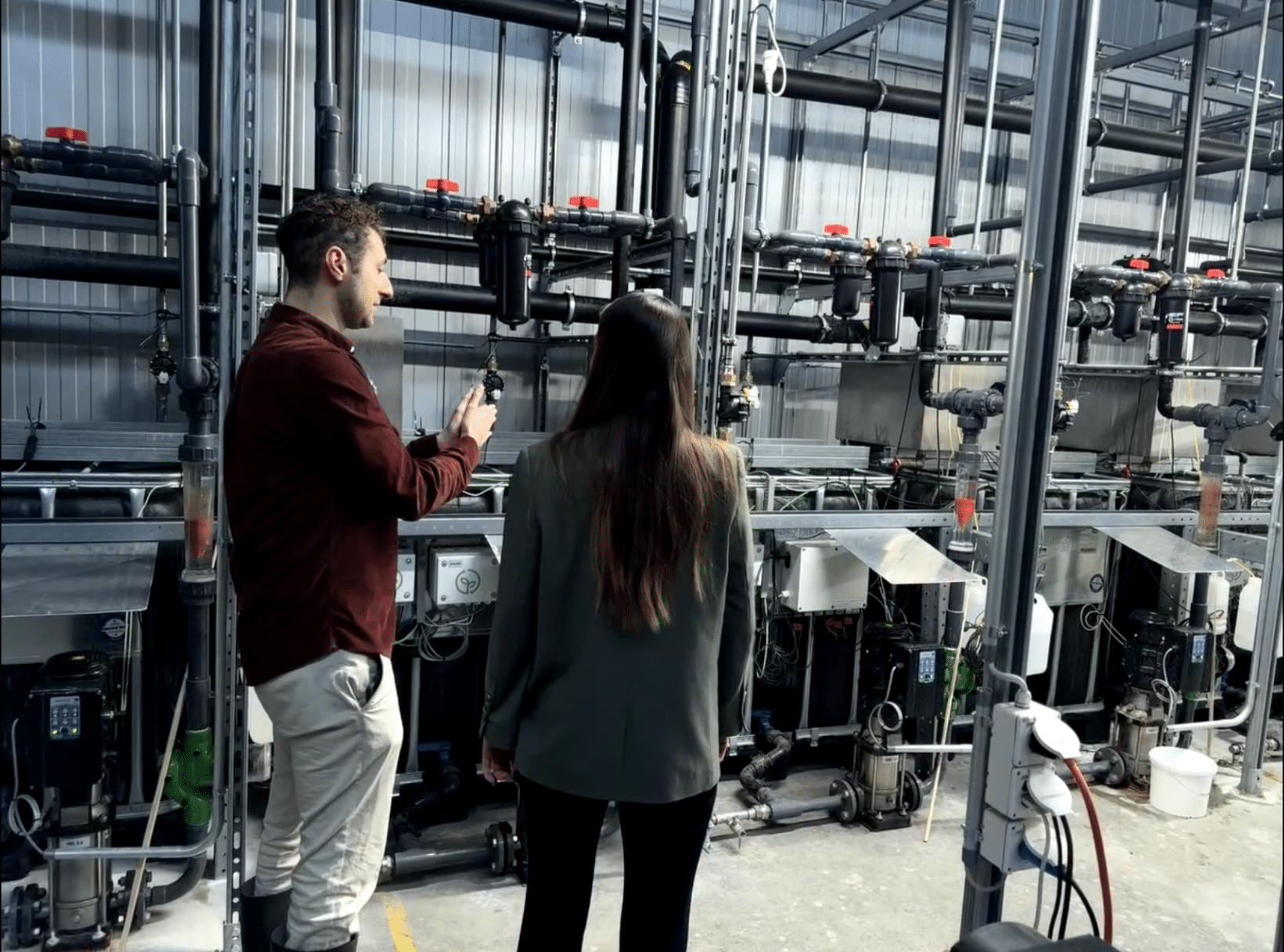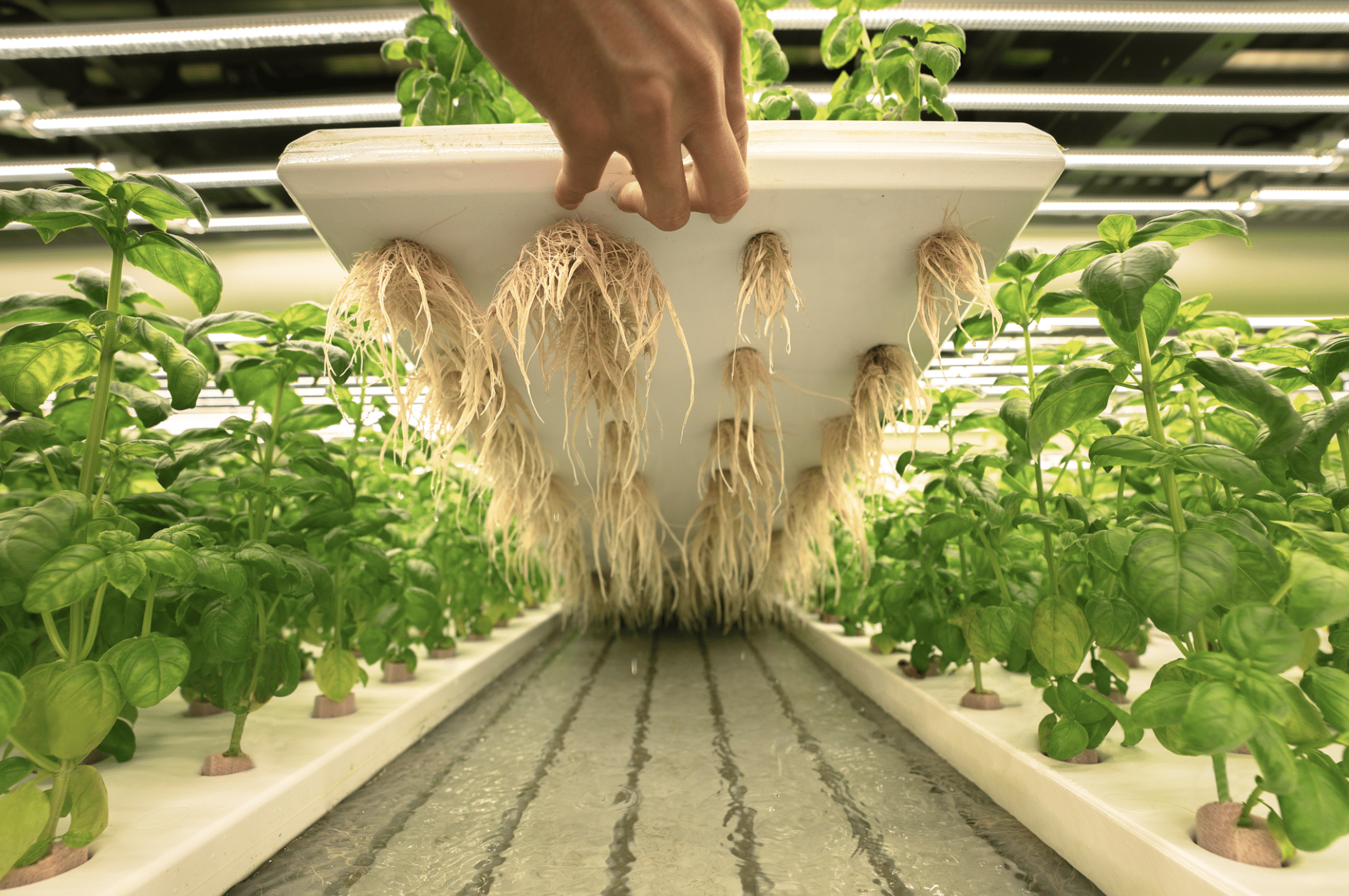
By guest Ladina Schöpf, host of the Building Green Podcast
Vertical farming has attracted a lot of interest lately. Are you aware of how and what these farms produce, and the benefits they offer compared to traditional agriculture?In a recent podcast episode with Mark, who runs a vertical farm in Zurich, Switzerland, I was able to collect some valuable insights to share with you. This will help you understand what makes vertical farming sustainable.
Vertical Farming: A New Approach to Urban Agriculture
As we face the challenge of feeding 10 billion people in the next 20 years using the same resources available today, it’s clear that we have to transform and rethink our food systems. Most vertical farms aim to optimize resource use to produce fresher, higher-quality products locally. This is crucial for ensuring a sustainable future.

Understanding Vertical Farming
Before we delve into the practical aspects, it’s essential to understand the concept of vertical farming itself. Vertical farming is a sustainable agricultural method of growing plants in vertically stacked layers, often indoors. This innovative farming method utilizes technologies such as hydroponics, aeroponics, and artificial lighting to create optimal conditions to grow mainly herbs. However, it’s also possible to grow salads and other produce.
Why Focus on Herbs?
Most vertical farms specialize in the production of herbs, which is a strategic choice. Herbs like mint are often imported from warmer far-off places such as Morocco, Kenya, and Israel, leading to a significant carbon footprint due to transportation. By growing these locally, vertical farms can provide fresh produce while eliminating wasteful imports and reducing environmental impact.

Resource Optimization: The Benefits of Vertical Farming
Unlike traditional farms that often require large plots of land and heavy pesticide use, vertical farms operate within a controlled environment. This means they can grow herbs indoors without the use of harmful chemicals, which is a crucial advantage over conventional farms. Some vertical farms use hydroponics, which is a soil-free growing method that circulates water laced with nutrients. This setup allows the farms to recycle water efficiently, using up to 95% less fresh water than conventional farming. Additionally, stacking the production vertically instead of growing herbs on extensive plots, allows the farms to produce in urban areas. That reduces the carbon emissions associated with transporting produce into cities significantly. For example, the transportation distance for herbs has been reduced from 2’000km from Almeria to Zurich, to just 20km from the factory to the consumer.
Energy Use in Vertical Farms
While vertical farms are beneficial in many ways, it’s important to note that they require significant energy, especially compared to traditional farms,, mostly due to artificial lighting. Choosing the right energy resource is crucial for them; thus, many vertical farms incorporate solar panels to produce their own electricity, striving towards a sustainable operation.
Looking Towards the Future: Urban Evolution
One fascinating aspect of vertical farming is its potential integration into urban environments, helping cities become self-sufficient with smaller ecological footprints. As an example, the excess heat generated by artificial lights in vertical farms can be captured and used to warm nearby buildings, offering a new model for smart city infrastructure.

Freezing to Save
A personal tip about herbs: Freezing them right after purchase not only preserves their freshness but also makes them easier to portion for recipes.
Building Green
Tomorrow’s Architecture Today

About:
In a world increasingly facing the challenges of climate change, the “Building Green: Tomorrow’s Architecture Today” podcast dives deep into the intersection of architecture, design, urbanism and environmental responsibility.
Our mission is to highlight the transformative power of sustainable architecture, not just as a practice but as a catalyst for broader societal change. Through engaging conversations with pioneering architects, urbanists, tech innovators, sociologists, eco-conscious corporations, and leading NGOs, we explore the details of green architectural planning and its impacts across diverse sectors. Our listeners are homeowners seeking eco-friendly changes, developers aiming to reshape the skyline, or simply curious souls passionate about our planet’s future. Together, let’s envision spaces where innovation harmonizes with nature, setting the foundation for a sustainable tomorrow.
Bio:
Ladina Schöpf, the driving force behind “Building Green”, is a curious soul with a deep concern for our planet’s future. With roots spanning Zurich, Barcelona, and São Paulo, her multicultural background has enriched her architectural vision, blending tradition with innovation. While her expertise spans a decade of diverse architecture projects, it’s her genuine curiosity about sustainability that truly drives her. Ladina believes that architecture can be a powerful tool for environmental awareness and change.
As Ladina embarks on her new venture with the “Building Green: Tomorrow’s Architecture Today” podcast, she hopes to channel her passion and curiosity into fostering broader awareness about sustainable architectural planning. She invites listeners to join her on this enlightening journey, exploring the intricate dance between aesthetics, functionality, and our collective responsibility towards the environment.
